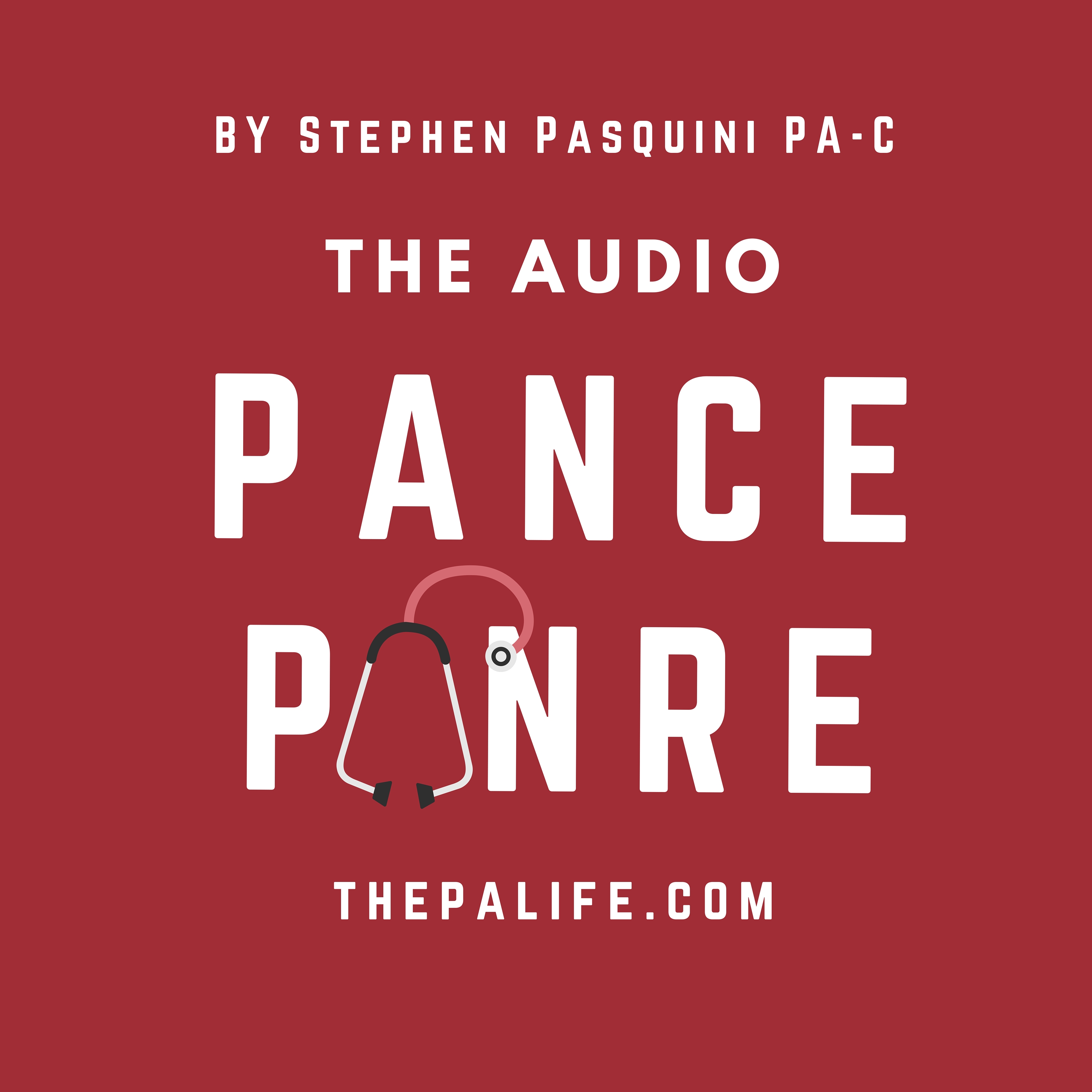Episode 41: The Audio PANCE and PANRE Board Review Podcast
Description
Welcome to episode 41 of the FREE Audio PANCE and PANRE Physician Assistant Board Review Podcast.
Join me as I cover 10 PANCE and PANRE board review questions from the Academy course content following the NCCPA™ content blueprint.
This week we will be taking a break from topic specific board review and covering 10 general board review questions.
Below you will find an interactive exam to complement the podcast.
I hope you enjoy this free audio component to the examination portion of this site. The full genitourinary board review includes over 72 GU specific questions and is available to all members of the PANCE and PANRE Academy.
* You can download and listen to past FREE episodes here, on iTunes or Stitcher Radio.
* You can listen to the latest episode, take an interactive quiz and download your results below.
Listen Carefully Then Take The Quiz
If you can’t see the audio player click here to listen to the full episode.
Episode 41 PANCE and PANRE Podcast Quiz
1. A mother brings her 6-year-old boy for evaluation of school behavior problems. She says the teacher told her that the boy does not pay attention in class, that he gets up and runs around the room when the rest of the children are listening to a story, and that he seems to be easily distracted by events outside or in the hall. He refuses to remain in his seat during class, and occasionally sits under his desk or crawls around under a table. The teacher told the mother this behavior is interfering with the child’s ability to function in the classroom and to learn. The mother states that she has noticed some of these behaviors at home, including his inability to watch his favorite cartoon program all the way through. Which of the following is the most likely diagnosis?
* Antisocial disorder
* Dysthymic mood disorder
* Obsessive-compulsive disorder
* Attention deficit hyperactivity disorder
2. Which of the following is the treatment of choice for a torus (buckle) fracture involving the distal radius?
A. Open reduction and internal fixation
B. Ace wrap or anterior splinting
C. Closed reduction and casting
D. Corticosteroid injection followed by splinting
3. Which of the following can be used to treat chronic bacterial prostatitis?
A. Penicillin
B. Cephalexin (Keflex)
C. Nitrofurantoin (Macrobid)
D. Levofloxacin (Levaquin)
4. A 25 year-old male with history of syncope presents for evaluation. The patient admits to intermittent episodes of rapid heart beating that resolve spontaneously. 12 Lead EKG shows delta waves and a short PR interval. Which of the following is the treatment of choice in this patient?
A. Radiofrequency catheter ablation
B. Verapamil (Calan)
C. Percutaneous coronary intervention
D. Digoxin (Lanoxin)
5. Which of the following pathophysiological processes is associated with chronic bronchitis?
A. Destruction of the lung parenchyma
B. Mucous gland enlargement and goblet cell hyperplasia
C. Smooth muscle hypertrophy in the large airways
D.
More Episodes
Listen to Podcast Episode 107: This vs. That – PANCE Blueprint Comparisons You Need to Know (Episode 1)
In today’s session, we will be discussing five questions related to PANCE/PANRE Blueprint topics. These questions will cover similar presentations and crucial comparisons that are important...
Published 08/15/23
Published 08/15/23
Listen to Podcast Episode 106: Ten PANCE, PANRE, and Rotation Review Questions + Review of Adrenal Insufficiency
If you can’t see the audio player, click here to listen to the full episode.
Welcome to episode 106 of the Audio PANCE and PANRE Physician Assistant/Associate Board Review...
Published 06/14/23


